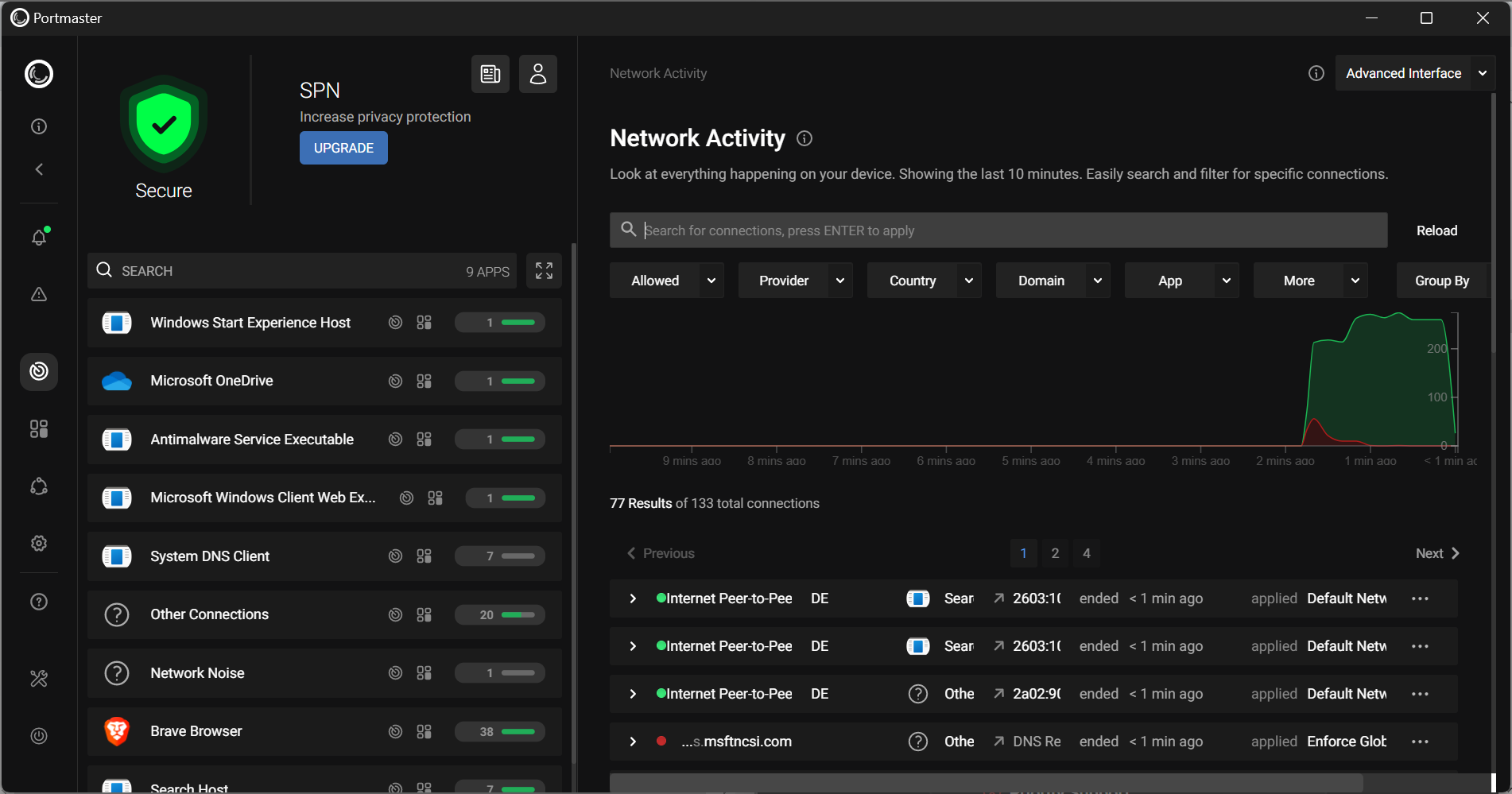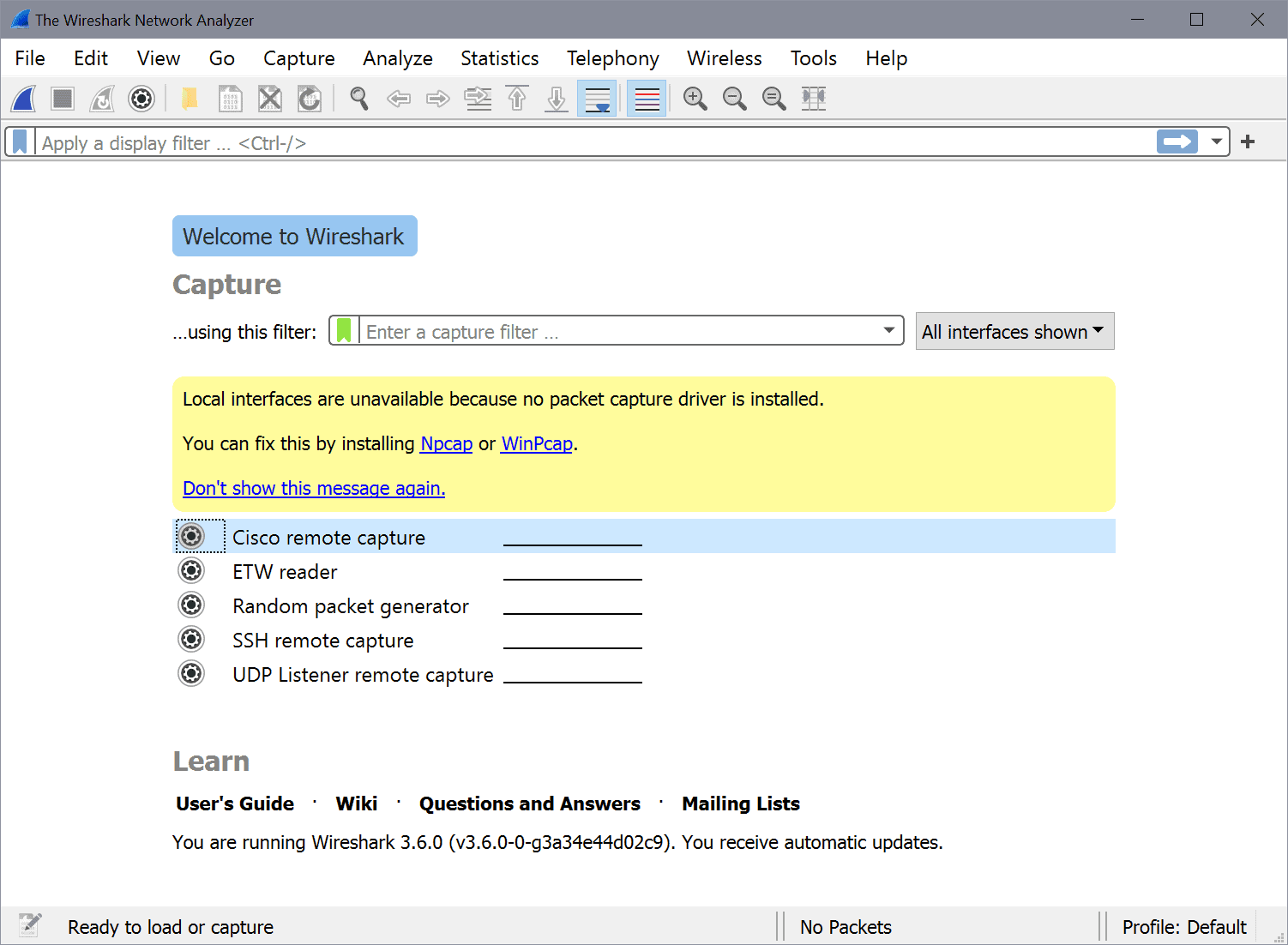How to install Nagios on Ubuntu server
Are you one of those special geeks that think there is never TMI (too much information)? If that describes you then Nagios is the monitor for you. Once installed, Nagios will keep you busy with more information about your system than you ever thought possible. But it's not just a matter of running apt-get install nagios. No, there's more to the installation than that.
In this article you will see how to install Nagios on a working Ubuntu Server installation. The release I used was 9.04, but you should be able to use 8.04 just as easily.
Features
You want features? Nagios is full of them. Nagios can monitor your entire network, you can handle problem remediation, you can plan network downtime, you can watch hosts, systems, services, applications..there's very little you can't do with Nagios.
But let's think about this installation. The best (and really only good) way to install Nagios is from source. This means you are going to have to do some compliation. Don't worry, it's not hard...when you have a step-by-step guide that is.
Before you start
If you are using, as I did, a Ubuntu server installation, you will need to install a few tools first. So from the command line (on your Ubuntu server) issue the following commands:
sudo apt-get install php5-gd
sudo apt-get install gcc
sudo apt-get install make
The above commands will install the tools you need in order to get Nagios installed. If you don't install the above, you won't be able to complete the installation.
Installing Nagios - preflight
Before you actually run the installation you will need to take care of some user/group accounting first.
Create the user nagios:
sudo useradd -m nagios
Give the nagios user a password:
sudo passwd nagios
NOTE: You will have to enter the new password twice for the above command.
Create the group nagios:
sudo groupadd nagios
Add the user nagios to the group nagios:
sudo usermod -G nagios nagios
Create the group nagcmd:
sudo groupadd nagcmd
Add the user nagios to the group nagcmd:
sudo usermod -a -G nagcmd nagios
Add the Apache user to the group nagcmd:
sudo usermod -a -G nagcmd www-data
Installing Nagios and Nagios Plugins
The first thing to do is to download the files you need. Issue the commands:
wget http://osdn.dl.sourceforge.net/sourceforge/nagios/nagios-3.0.6.tar.gz
and
wget http://osdn.dl.sourceforge.net/sourceforge/nagiosplug/nagios-
plugins-1.4.11.tar.gz
to download the files you need.
Untar the Nagios file with:
tar xvzf nagios-3.0.6.tar.gz
Change into the newly created Nagios directory with the command:
cd nagios-3.0.6
Now run the configure script using the nagcmd defined as the command group with the command:
sudo ./configure --with-command-group=nagcmd
Time to compile:
sudo make all
Time to install everything:
make install
make install-init
make install-config
make install-commandmode
Almost ready to finalize the installation of Nagios (before moving on to installing the plugins.) There is one simple configuration to take care of (for the basic installation). Open up the /usr/local/nagios/etc/objects/contacts.cfg file and add your email address as the contact email address. That's the only configuration to change for now.
Configuring for the Web interface
There are just a few commands to run to configure the Web interface:
make install-webconf
htpasswd -c /usr/local/nagios/etc/htpasswd.users nagiosadmin
/etc/init.d/apache2 reload
The final command above simply restarts Apache.
Install the plugins
Before you log into your Nagios installation you have to install your plugins first. Change to the directory you downloaded the Nagios files to and untar the plugins file:
tar xvzf nagios-plugins-1.4.11.tar.gz
Now change into the newly created directory:
cd nagios-plugins-1.4.11
Compile the plugins with the command:
sudo ./configure --with-nagios-user=nagios --with-nagios-group=nagios
Now install the plugins with the following commands:
make
make install
Fire it up!
Of course you want to make sure Nagios starts any time the system is restarted. Do this with the command:
sudo ln -s /etc/init.d/nagios /etc/rcS.d/S99nagios
And finally, before you start up Nagios, make sure there are no errors with the command:
sudo /usr/local/nagios/bin/nagios -v /usr/local/nagios/etc/nagios.cfg
If you see no errors reported, it's time to start it up. Issue the command:
sudo /etc/init.d/nagios start
Nagios is ready to go. Point your browser to:
http://ADDRESS_OF_NAGIOS_SERVER/nagios
You should be ready to enjoy all that is Nagios. Congratulations.
Advertisement

















Hi,
Great walkthrough, working without a flaw. One thing: when copying on a windows machine, and pasting into a shell, the hyphens (‘-‘) sometimes have to be re-entered.
With regards,
Mark
Thank you … I have nagios3.0.6 installed on my ubuntu server … thank you for the guidance easy to follow and understand … thank you
looks like with 9.10 / 9.04 you can avoid the source install:
https://help.ubuntu.com/community/Nagios3
it’s just one package now!
Enjoy.
Your detailed guide is out of date and won’t work.
Some commands duplicate actions.
e.g
#/usr/sbin/groupadd nagios
#/usr/sbin/usermod -G nagios nagios
The previous useradd nagios command automatically creates the group nagios and adds nagions
userid to it.
# wget http://osdn.dl.sourceforge.net/sourceforge/nagios/nagios-3.0.6.tar.gz
This file does not exist. Best to download it from nagios.org anyway.
I stopped at this point.
Whoops!
Error: Could not read object configuration data!
Here are some things you should check in order to resolve this error:
1. Verify configuration options using the -v command-line option to check for errors.
2. Check the Nagios log file for messages relating to startup or status data errors.
This Tutorial is intended to provide you with simple instructions on how to install Nagios from source (code) on Ubuntu and have it monitoring your local machine inside of 20 minutes.
If you follow these instructions, here’s what you’ll end up with:
Nagios and the plugins will be installed underneath /usr/local/nagios
Nagios will be configured to monitor a few aspects of your local system (CPU load, disk usage, etc.)
The Nagios web interface will be accessible at http://localhost/nagios/
Required Packages:
……………..
Make sure you’ve installed the following packages on your Ubuntu installation before continuing.
Apache 2
GCC compiler and development libraries
GD development libraries
Preparing Your System
First you need to install the following packages
sudo apt-get install apache2
sudo apt-get install build-essential
sudo apt-get install libgd2-xpm-dev
1) Create Account Information
Become the root user.
sudo -s
Create a new nagios user account and give it a password.
#/usr/sbin/useradd nagios
#passwd nagios
On Ubuntu server edition , you will need to also add a nagios group (it’s not created by default). You should be able to skip this step on desktop editions of Ubuntu.
#/usr/sbin/groupadd nagios
#/usr/sbin/usermod -G nagios nagios
Create a new nagcmd group for allowing external commands to be submitted through the web interface. Add both the nagios user and the apache user to the group.
#/usr/sbin/groupadd nagcmd
#/usr/sbin/usermod -G nagcmd nagios
#/usr/sbin/usermod -G nagcmd www-data
2) Download Nagios and the Plugins
Create a directory for storing the downloads.
#mkdir ~/downloads
#cd ~/downloads
Download the source code tarballs of both Nagios and the Nagios plugins (visit http://www.nagios.org/download/ for links to the latest versions). At the time of writing, the latest versions of Nagios and the Nagios plugins were 2.10 and 1.4.10, respectively.
#wget http://switch.dl.sourceforge.net/sourceforge/nagios/nagios-2.10.tar.gz
#wget http://kent.dl.sourceforge.net/sourceforge/nagiosplug/nagios-plugins-1.4.10.tar.gz
3) Compile and Install Nagios
Extract the Nagios source code tarball.
#cd ~/downloads
#tar xzf nagios-2.10.tar.gz
#cd nagios-2.10
Run the Nagios configure script, passing the name of the group you created earlier like so:
#./configure –with-command-group=nagcmd
Compile the Nagios source code.
#make all
Install binaries, init script, sample config files and set permissions on the external command directory.
#make install
#make install-init
#make install-config
#make install-commandmode
Don’t start Nagios yet – there’s still more that needs to be done…
4) Customize Configuration
Sample configuration files have now been installed in the /usr/local/nagios/etc directory. These sample files should work fine for getting started with Nagios. You’ll need to make just one change before you proceed…
Edit the /usr/local/nagios/etc/objects/contacts.cfg config file with your favorite editor and change the email address associated with the nagiosadmin contact definition to the address you’d like to use for receiving alerts.
#vi /usr/local/nagios/etc/objects/contacts.cfg
5) Configure the Web Interface
Install the Nagios web config file in the Apache conf.d directory.
#make install-webconf
Create a nagiosadmin account for logging into the Nagios web interface. Remember the password you assign to this account – you’ll need it later.
#htpasswd -c /usr/local/nagios/etc/htpasswd.users nagiosadmin
Restart Apache to make the new settings take effect.
#/etc/init.d/apache2 reload
6) Compile and Install the Nagios Plugins
Extract the Nagios plugins source code tarball.
#cd ~/downloads
#tar xzf nagios-plugins-1.4.10.tar.gz
#cd nagios-plugins-1.4.10
Compile and install the plugins.
#./configure –with-nagios-user=nagios –with-nagios-group=nagios
#make
#make install
7) Start Nagios
Configure Nagios to automatically start when the system boots.
#ln -s /etc/init.d/nagios /etc/rcS.d/S99nagios
Verify the sample Nagios configuration files.
#/usr/local/nagios/bin/nagios -v /usr/local/nagios/etc/nagios.cfg
If there are no errors, start Nagios.
#/etc/init.d/nagios start
8) Login to the Web Interface
You should now be able to access the Nagios web interface at the URL below. You’ll be prompted for the username (nagiosadmin) and password you specified earlier.
http://localhost/nagios/
Click on the “Service Detail†navbar link to see details of what’s being monitored on your local machine. It will take a few minutes for Nagios to check all the services associated with your machine, as the checks are spread out over time.
9) Other Modifications
If you want to receive email notifications for Nagios alerts, you need to install the mailx (Postfix) package.
#apt-get install mailx
You’ll have to edit the Nagios email notification commands found in /usr/local/nagios/etc/commands.cfg and change any ‘/bin/mail’ references to ‘/usr/bin/mail’. Once you do that you’ll need to restart Nagios to make the configuration changes live.
#/etc/init.d/nagios restart
In my searches, I’ve noticed that a lot of people are installing Nagios from source on Ubuntu. I’m curious why you chose this route as opposed to installing the pre-built packages.
Jack,
I am following your guide to install Nagios on a Ubuntu server. However when I get to the following command it does not seem to like it.
The command is Sudo ./configure -with-command-group=magcmd
After I input this command I get the following:
Checking for a BSD-compatible install… /usr/bin/install -c
Checking build system type… i686-pc-linux-gnulibc1
Checking host system type… i686-pc-linux-gnulibc1
Checking for gcc… gcc
Checking for C compiler default output file name… configure: error: C compiler cannot create executables
See ‘config.log’ for more details.
All the steps leading up to this have worked great not sure why this one is giving me troubles. If anyone has any ideas please let me know. thank you.
Adam
I got this error during the configure as well. Going through the nagios html docs I found a line to
apt-get install build-essential
after that everything worked as suggested.
Hi Jack.
I’m pretty new to linux but i followed your manual and everything worked out fine, no errors or warnings. How ever the last command “sudo /etc/init.d/nagios start” does not work – “command not found”. Any advice on how to fix this?
Thanks for a straight forward and easy to use manual, just the thing I needed.
tho.
if you do install it this way (via apt) you will install it with the command:
sudo apt-get install nagios3
you will have to answer a few questions during the installation – most of them to do with email.
WARNING: i did try to run this type of installation and nagios wound up working but no plugins would work with it. installing via source didn’t have these problems.
Nagios is a free, open-source tool that can be used to monitor network components and services. When it detects a problem, it can send
alert messages by either e-mailr. then server engineer easily can manage his network. It can also be configured so that only designated
personnel can view status information for particular services or equipment.
Installation:
Nagios3 is in the repository for Ubuntu 8.10.
we can watch that it will install a number of packages to make it all work.
The following extra packages will be installed:
libfreetype6 libgd2-noxpm libjpeg62 libnet-snmp-perl libperl5.10 libpng12-0
libradius1 libsensors3 libsnmp-base libsnmp15 libsysfs2 libtalloc1
libwbclient0 nagios-images nagios-plugins nagios-plugins-basic
nagios-plugins-standard nagios3-common nagios3-doc radiusclient1
samba-common smbclient snmp
Suggested packages:
libfreetype6-dev libgd-tools libcrypt-des-perl libdigest-hmac-perl
libdigest-sha1-perl libio-socket-inet6-perl lm-sensors nagios2 nagios-text
nagios whois nagios-nrpe-plugin smbfs
The following NEW packages will be installed:
libfreetype6 libgd2-noxpm libjpeg62 libnet-snmp-perl libperl5.10 libpng12-0
libradius1 libsensors3 libsnmp-base libsnmp15 libsysfs2 libtalloc1
libwbclient0 nagios-images nagios-plugins nagios-plugins-basic
nagios-plugins-standard nagios3 nagios3-common nagios3-doc radiusclient1
samba-common smbclient snmp
0 upgraded, 24 newly installed, 0 to remove and 0 not upgraded.
Need to get 19.5MB of archives.
After this operation, 54.6MB of additional disk space will be used.
Once it is installed run a pre-flight check to verify it is working correctly.